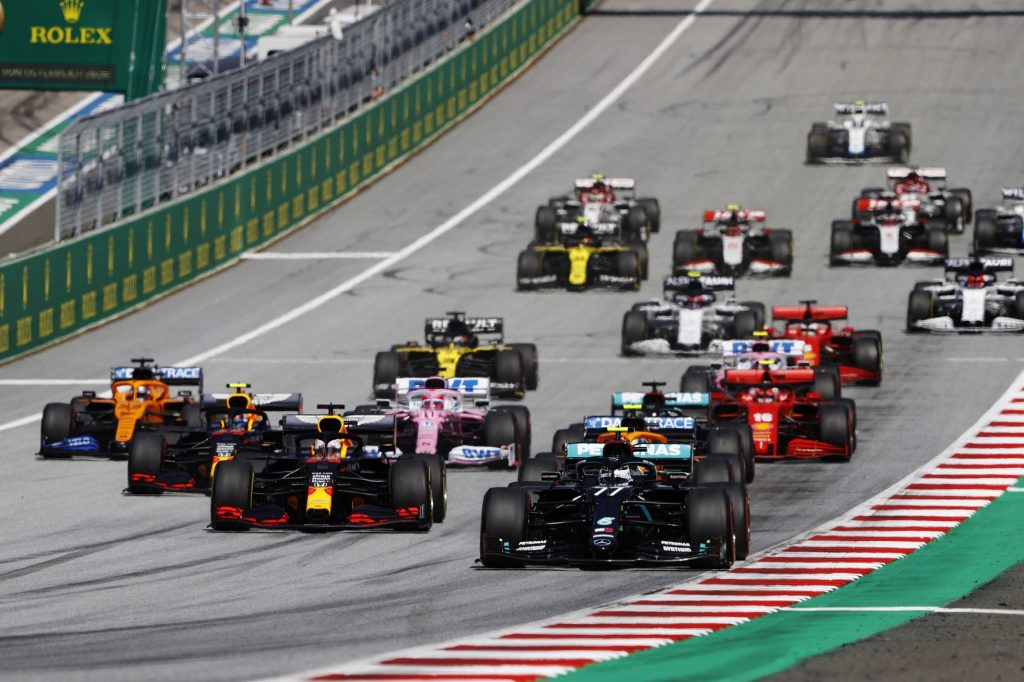
F1 Talk: How new mid-season engine rules will actually benefit Mercedes
From the Belgian Grand Prix there will be new restrictions on engine modes that the teams can run during an event.
The changes are intended to rein in the teams that gain the most in qualifying with their “qualy modes” so all Mercedes powered teams.
New rules will mean that the teams must run the same ICE (internal combustion engine) modes in both qualifying and the race.
In a letter given to the teams this week the FIA said: “It is the duty of each competitor to satisfy the FIA technical delegate and the stewards that his automobile complies with these regulations in their entirety at all times during an event.
“The designs of the car, its components and systems shall, with the exception of safety features, demonstrate their compliance with these regulations by means of physical inspection of hardware or materials. No mechanical design may rely upon software inspection as a means of enduring its compliance.
“Due to their nature the compliance of electronic systems may be assessed by means of inspection of hardware, software and data.

There was also a reference to the FIA wanting the drivers to drive the car alone and unaided so “in order to address those concerns in the future, we will be requiring that during the qualifying session and the race, the PU should operate in a single mode.”
Analysis
Normally we will see teams and drivers changing engine modes constantly throughout the grand prix.
The good thing with this is that it creates better racing because you can strategically use higher power modes to attack or defend whilst saving the power unit at other stages of the race which might leave you vulnerable to an overtake.
Getting rid of this variable will just mean everybody is using a similar engine mode at the same time so we will see less overtaking.
Teams with the most efficient power unit might opt to run a higher engine setting compared to other teams because they are confident with reliablity.
We all know that Mercedes have the most reliable car on the grid so this will only help them.

Lets take this example. If Red Bull has some worries about using a high engine mode for a long time then they will have to run with say 80% of their optimum power for the qualifying and the whole race.
Whereas Mercedes and Racing Point who are more confident with their reliability might run at 85% and therefore have an advantage all weekend because they have a more efficient power unit and have less fears of reliability concerns.
Normally, Red Bull can turn up their engine to full whack for a few laps in the race when they need to but now they can’t.
In an attempt to level the playing field I believe we might see the opposite. Mercedes might go from locking out the front row by one second to half a second but they will now likely have an constant advantage in the race.

Mercedes’ advantage in qualifying reducing does not do anything. It doesn’t matter if they are 1-2 in qualifying by two seconds or two tenths because the difference between 2nd and 3rd is still six metres no matter how far ahead you qualify.
This will be incredibly hard for the FIA to police too. Surely the teams can find a way around this by mapping a qualifying mode in a different way.
At the moment, the FIA have said they do not know how they will regulate the operations of the engines from Belgium onwards. That says it all really.
The rules will have to be very clear but I fear like we have seen with the Racing Point protest, there will be lots of room for ambiguity and interpretation which is not what the sport needs.

Currently, regulations for the power units are white and black, 100kh/hr and 110kg max for a race. For me, it should just be left at that.
Possible changes that we might see is Racing Point falling back in qualifying and Williams dropping back too, perhaps not making it into Q2 like they have started to do this season.
This is a huge rule change to make in the middle of the season and I simply do not see how it will improve the spectacle.



![Private: [ID: 71rYi-xncgM] Youtube Automatic](https://motorradio-xijqc.projectbeta.co.uk/wp-content/uploads/2024/08/private-id-71ryi-xncgm-youtube-a-1-360x203.jpg)
![Private: [ID: 1SfHxvC8Doo] Youtube Automatic](https://motorradio-xijqc.projectbeta.co.uk/wp-content/uploads/2024/07/private-id-1sfhxvc8doo-youtube-a-1.jpg)
![Private: [ID: H6XRkf6kROQ] Youtube Automatic](https://motorradio-xijqc.projectbeta.co.uk/wp-content/uploads/2024/07/private-id-h6xrkf6kroq-youtube-a-1-360x203.jpg)
![Private: [ID: Kb6w-qAmKls] Youtube Automatic](https://motorradio-xijqc.projectbeta.co.uk/wp-content/uploads/2023/12/private-id-kb6w-qamkls-youtube-a-360x203.jpg)
![Private: [ID: CcpwYw20k3k] Youtube Automatic](https://motorradio-xijqc.projectbeta.co.uk/wp-content/uploads/2024/07/private-id-ccpwyw20k3k-youtube-a-360x203.jpg)

![[ID: x1SiRC5jhW4] Youtube Automatic](https://motorradio-xijqc.projectbeta.co.uk/wp-content/uploads/2022/04/id-x1sirc5jhw4-youtube-automatic-360x203.jpg)
![[ID: lMZ8lAeLubk] Youtube Automatic](https://motorradio-xijqc.projectbeta.co.uk/wp-content/uploads/2022/04/id-lmz8laelubk-youtube-automatic-360x203.jpg)
![[ID: GAYCcnqyFo4] Youtube Automatic](https://motorradio-xijqc.projectbeta.co.uk/wp-content/uploads/2022/04/id-gayccnqyfo4-youtube-automatic-360x203.jpg)
![[ID: Gg142H296QY] Youtube Automatic](https://motorradio-xijqc.projectbeta.co.uk/wp-content/uploads/2022/04/id-gg142h296qy-youtube-automatic-360x203.jpg)
![Private: [ID: PYDb727riQg] Youtube Automatic](https://motorradio-xijqc.projectbeta.co.uk/wp-content/uploads/2023/02/private-id-pydb727riqg-youtube-a-1-236x133.jpg)




